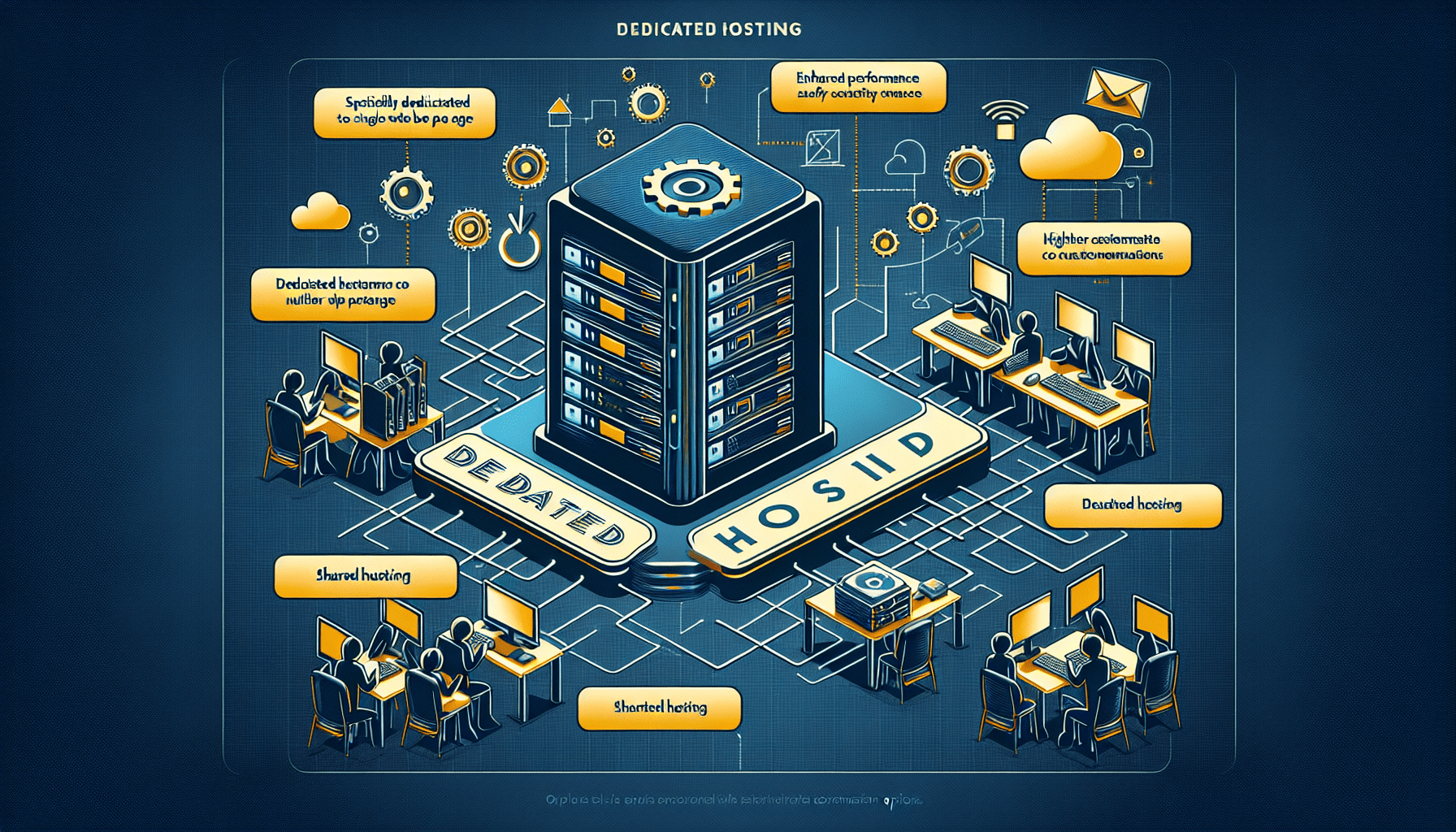You know the feeling of panic and frustration that washes over you when you discover that your precious website has been hacked. It’s a nightmare scenario that can lead to loss of data, damage to your reputation, and a lot of wasted time and money. But fear not, because in this article we have gathered some quick tips that will help you prevent website hacking and keep your online presence safe and secure. So grab a cup of coffee, sit back, and let us guide you through the essential steps to protect your website from cyber threats.
Use Strong and Unique Passwords
Create a Strong Password
When it comes to creating a strong password, it’s important to use a combination of uppercase and lowercase letters, numbers, and special characters. Avoid using common words or phrases that are easy to guess. Instead, try to come up with a passphrase that includes a mix of different characters. For example, instead of using “password123”, consider using something like “P@ssw0rd!987”.
Avoid Common Passwords
Many people often use common passwords, which makes it easier for hackers to gain access to their accounts. Avoid using passwords such as “123456” or “qwerty”, as these are easily guessable. Instead, choose a password that is unique and not easily associated with personal information, such as birthdays or names of family members.
Use a Password Manager
Managing multiple strong passwords can be challenging, especially if you have numerous online accounts. A password manager can be a helpful tool in generating and securely storing complex passwords for each of your accounts. It eliminates the need to remember all your passwords and allows you to easily access them when needed.
Keep Software and Scripts Updated
Regularly Update Content Management Systems (CMS)
Content management systems (CMS) like WordPress, Joomla, or Drupal are continuously being updated to fix bugs and address security vulnerabilities. It’s important to regularly update your CMS to ensure that you have the latest security patches installed. This will help protect your website from potential hacking attempts.
Update Themes and Plugins
Themes and plugins are additional pieces of software that enhance the functionality of your website. However, if these themes and plugins are not regularly updated, they can become a security risk. Hackers often target outdated themes and plugins to exploit vulnerabilities. Keep all themes and plugins up to date to mitigate the risk of a security breach.
Remove Unused Software and Scripts
Unused software and scripts on your website can become a potential entry point for hackers. It’s important to regularly review and remove any software or scripts that you no longer use or need. By doing so, you reduce the number of potential vulnerabilities on your website, making it less attractive to hackers.
Enable Two-Factor Authentication (2FA)
Implement 2FA for Administrator Accounts
Two-factor authentication adds an extra layer of security to your website login process. By enabling 2FA for administrator accounts, you ensure that even if a hacker manages to obtain your password, they would still need a second form of authentication to access your website. This could be a time-based one-time password (TOTP) generated by an authenticator app or a text message verification code.
Utilize 2FA Plugins or Services
For websites built on platforms like WordPress, there are numerous 2FA plugins available that can be easily installed. These plugins integrate with popular authentication apps and provide an additional level of security for user logins. Alternatively, you can utilize 2FA services provided by third-party providers to add an extra layer of protection to your website.
Secure Hosting and Server
Choose a Reliable Hosting Provider
The security of your website also depends on the hosting provider you choose. Select a reliable hosting provider that prioritizes website security. Look for features such as regular backups, secure data centers, and advanced security measures like firewalls and intrusion detection systems.
Use Secure File Transfer Methods (SFTP)
When transferring files between your computer and your website’s server, it’s essential to use secure file transfer methods. SFTP (Secure File Transfer Protocol) encrypts the data being transferred, preventing unauthorized access. Avoid using insecure methods like FTP (File Transfer Protocol) as they transmit data in plain text, making it vulnerable to interception.
Keep Server Software Up to Date
In addition to keeping your CMS, themes, and plugins up to date, it’s crucial to regularly update the server software itself. This includes the operating system, web server software (such as Apache or Nginx), and any other software running on your server. Outdated server software can be a target for hackers, so staying up to date is essential.
Secure Communication
Use HTTPS Protocol
Implementing HTTPS (Hypertext Transfer Protocol Secure) on your website ensures that all data transmitted between your website and its visitors is encrypted. This prevents any tampering or eavesdropping by hackers. Obtain an SSL certificate and configure your website to use HTTPS to provide a secure browsing experience for your users.
Encrypt Sensitive Data Transfers
If your website involves the transfer of sensitive data, such as credit card information or user credentials, it’s crucial to encrypt these transmissions. Utilize encryption protocols such as SSL/TLS to protect this data during transit and ensure that it cannot be intercepted or accessed by unauthorized individuals.
Implement Firewall and Intrusion Detection Systems
Firewalls and intrusion detection systems are crucial components of a secure website infrastructure. A firewall acts as a barrier between your website and the internet, filtering out malicious traffic. An intrusion detection system monitors your website for suspicious activities and alerts you in case of any potential security breaches. Implementing these systems adds an extra layer of protection to your website.
Regularly Backup Website Data
Backup All Website Files and Databases
Regularly backing up your website’s files and databases is essential in mitigating the impact of a hacking incident. Schedule automated backups that capture all the necessary data, including your website’s code, images, media files, and databases. This ensures that if your website is compromised, you can easily restore it to a previous state.
Store Backups in a Secure Location
It’s not enough to simply perform backups; you also need to securely store them. Store backups in a location separate from your website’s server to prevent them from being compromised in case of a server breach. Utilize secure cloud storage or offline storage methods to protect your backups.
Test Backup Restoration Processes
Performing regular backups is only half the battle; you also need to ensure that you can successfully restore your website from those backups if needed. Regularly test your backup restoration processes to confirm that your backups are valid and your restoration procedures are effective. This way, you can have peace of mind knowing that your website can be restored in case of a security incident.
Implement User Permissions and Access Control
Assign Roles and Permissions to Users
To enhance website security, carefully assign roles and permissions to each user on your website. Different users may require varying levels of access based on their responsibilities. By assigning granular permissions, you ensure that users have access only to the functions and content they specifically need, reducing the risk of unauthorized access.
Limit Admin Access to Necessary Functions
The principle of least privilege should be applied when granting administrative access. Grant admin-level access only to those users who absolutely require it. Avoid providing blanket admin access to everyone, as this increases the likelihood of accidental or intentional misuse of admin privileges.
Regularly Review and Remove Unnecessary User Accounts
As your website evolves, it’s important to regularly review user accounts and remove any unnecessary or inactive accounts. This reduces the potential attack surface and minimizes the risk of compromised accounts being used as a gateway to your website. Regularly audit user accounts and remove any that are no longer required.
Educate and Train Website Users
Promote Strong Password Practices
A strong security posture begins with the users themselves. Educate your website users about the importance of using strong, unique passwords. Encourage them to create passwords using a combination of uppercase and lowercase letters, numbers, and special characters. Reinforce the message of password security to prevent users from using weak and easily guessable passwords.
Educate Users About Phishing and Social Engineering Attacks
Phishing attacks and social engineering tactics are commonly used by hackers to trick users into revealing their login credentials or other sensitive information. Educate your website users about these types of attacks and how to recognize and avoid them. Provide examples and tips on how to identify suspicious emails or messages and encourage them to report any suspicious activities.
Encourage Reporting of Suspicious Activities
Creating a culture of vigilance among your website users is crucial in early detection and response to potential security threats. Encourage your users to report any suspicious activities they encounter on your website, such as unexpected errors, unusual account behavior, or suspicious login attempts. Having an open line of communication can help identify and address potential security issues promptly.
Monitor Website Activity
Install Website Monitoring Tools
Monitoring your website’s activity is vital in detecting and responding to potential security incidents. Install website monitoring tools that can track and analyze traffic, user behavior, and potential security threats. These tools provide valuable insights and can help you identify any abnormal or suspicious activities on your website.
Monitor Server Logs and File Integrity
Regularly review and analyze your server logs to identify any anomalies or signs of unauthorized access attempts. Additionally, implement file integrity monitoring to detect any changes or modifications to critical website files. By monitoring both server logs and file integrity, you can quickly identify and respond to potential security breaches.
Set up Email or Text Alerts for Suspicious Activities
To ensure timely notification of potential security incidents, set up email or text alerts for any suspicious activities detected on your website. This allows you to respond promptly and take appropriate action to mitigate the impact of an attack. Being aware of unusual activity or security breaches as they happen can save you valuable time and resources.
Regularly Scan and Assess for Vulnerabilities
Use Vulnerability Scanning Tools
Vulnerability scanning tools can help identify known security vulnerabilities in your website’s code, plugins, themes, or server software. Regularly scan your website for vulnerabilities to identify any potential entry points for hackers. Once vulnerabilities are detected, take immediate steps to patch or remediate them to prevent exploitation.
Conduct Regular Security Audits
In addition to vulnerability scans, conduct regular security audits to assess the overall security posture of your website. These audits involve a comprehensive review of your website’s infrastructure, configurations, user access controls, and security protocols. By identifying and addressing any weaknesses, you can proactively enhance your website’s security.
Fix Identified Vulnerabilities Promptly
Identifying vulnerabilities is only the first step; it’s equally important to promptly address and fix them. As soon as a vulnerability is detected, take immediate action to patch or fix it. This may involve installing software updates, applying security patches, or working with developers to resolve any code-related vulnerabilities. The sooner vulnerabilities are addressed, the less time hackers have to exploit them.
By following these comprehensive tips, you can significantly reduce the risk of your website being hacked. Implement robust security measures, stay vigilant, and regularly update and maintain your website’s security systems. With the right precautions in place, you can ensure a safe and secure online presence for yourself and your users.












